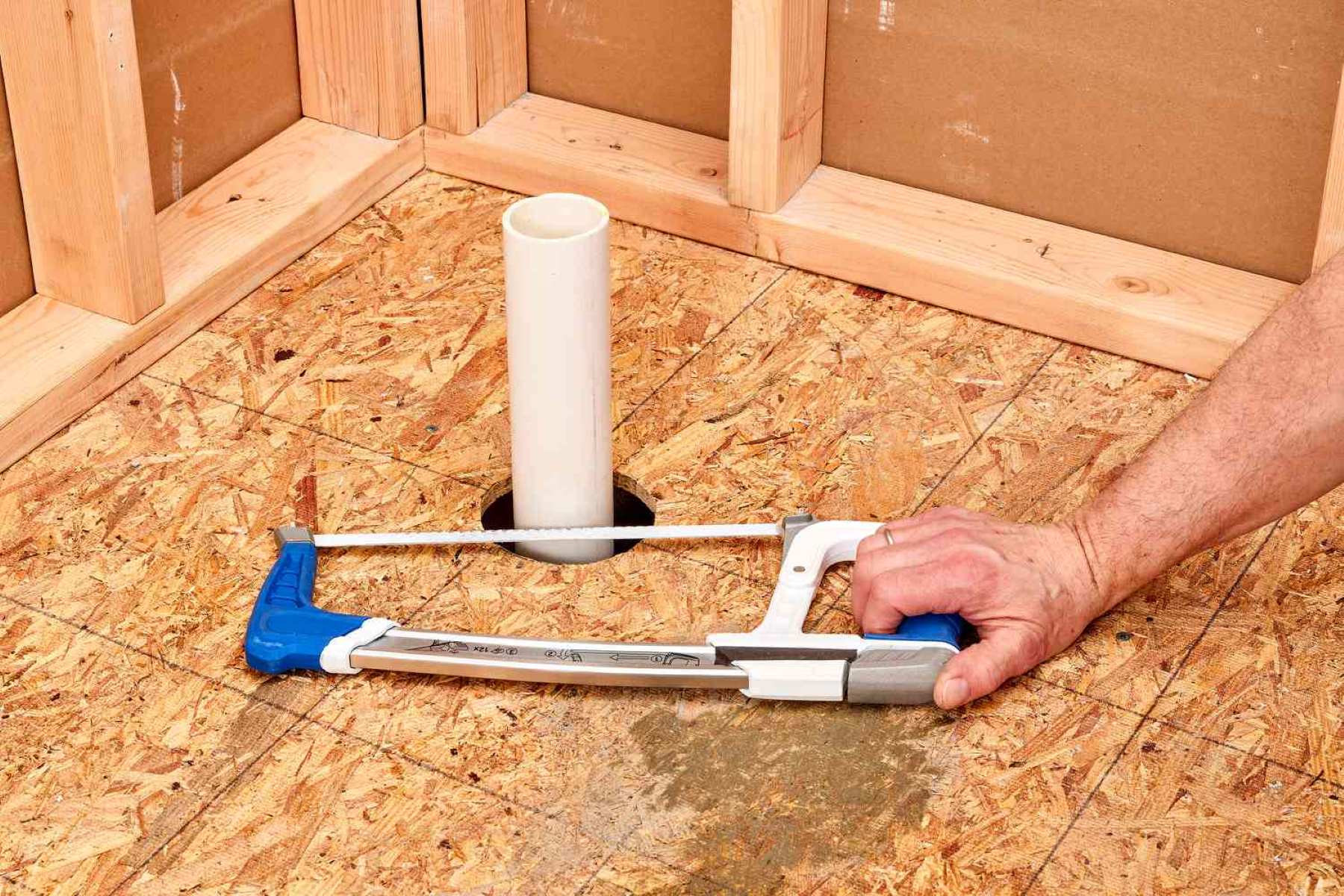Home>Home and Garden>The Ultimate Guide To Fixing Rabbit Holes In Your Yard


Home and Garden
The Ultimate Guide To Fixing Rabbit Holes In Your Yard
Published: January 15, 2024
Discover effective solutions for repairing rabbit holes in your yard with our comprehensive home and garden guide. Keep your outdoor space looking pristine and safe for all.
(Many of the links in this article redirect to a specific reviewed product. Your purchase of these products through affiliate links helps to generate commission for Regretless.com, at no extra cost. Learn more)
Table of Contents
Introduction
Rabbit holes may seem like a charming aspect of nature, evoking images of Beatrix Potter's beloved characters or the idyllic countryside. However, for homeowners, these seemingly innocent burrows can present a frustrating challenge. Whether you have a beautifully manicured garden or a sprawling lawn, the presence of rabbit holes can lead to a range of issues, from safety hazards to damage to your landscaping.
Understanding the nature of rabbit holes and the potential problems they pose is crucial for effectively addressing this common concern. This comprehensive guide will provide you with valuable insights into the world of rabbit holes, the risks they pose, and practical solutions for fixing and preventing them. By the end of this guide, you'll be equipped with the knowledge and strategies needed to reclaim your yard from these persistent burrowers.
Let's delve into the intricate world of rabbit holes and explore the most effective ways to address this common issue.
Understanding Rabbit Holes
Rabbit holes are small tunnels or burrows dug by rabbits for shelter, nesting, and protection from predators. These holes are typically found in grassy areas, gardens, and under bushes or structures. Rabbits are prolific diggers, and their burrowing behavior is instinctual, serving as a means of protection and reproduction.
The size and depth of rabbit holes can vary depending on the species of rabbit and the terrain in which they are located. In general, these burrows are relatively small, with entrances measuring around 4 to 6 inches in diameter. However, the tunnels themselves can extend several feet underground, creating an extensive network of interconnected pathways.
Rabbit holes are often characterized by a distinctive shape and appearance. The entrance typically appears as a round hole leading into the ground, and the surrounding area may show signs of disturbance, such as loose soil or displaced vegetation. In some cases, multiple entrances may be present, indicating a complex system of burrows.
It's important to recognize that rabbit holes are not only a nuisance for homeowners but also serve as vital habitats for rabbits. These burrows provide shelter for the animals and serve as a safe space for them to raise their young. As such, addressing the issue of rabbit holes requires a balanced approach that considers both the needs of the homeowner and the natural behavior of these animals.
Understanding the behavior and habitat requirements of rabbits is essential for effectively managing rabbit holes in your yard. By gaining insight into the reasons behind their burrowing behavior, you can implement strategies that minimize the impact on your property while respecting the ecological role of these small mammals.
In the next section, we will explore the potential risks and problems associated with rabbit holes, shedding light on the challenges they can pose for homeowners and property maintenance.
Potential Risks and Problems
The presence of rabbit holes in your yard can give rise to a range of potential risks and problems, impacting both the aesthetic appeal and functionality of your outdoor space. It's essential to be aware of these challenges in order to address them effectively and safeguard your property.
Safety Hazards
Rabbit holes pose a significant safety risk, especially in areas frequented by children, pets, or unsuspecting adults. The sudden collapse of a rabbit hole can lead to trips, falls, and potential injuries. Moreover, uneven ground resulting from extensive burrowing may create tripping hazards, further exacerbating the safety concerns. These risks are particularly pronounced in well-maintained lawns and play areas, where the presence of hidden burrows can lead to unexpected accidents.
Damage to Landscaping
The digging activities of rabbits can cause substantial damage to landscaping features such as flower beds, shrubs, and garden borders. The excavation of soil and creation of underground tunnels can destabilize plant roots, leading to wilting, stunted growth, or even plant mortality. Additionally, the unsightly appearance of disturbed soil and displaced vegetation can detract from the visual appeal of your yard, undermining the effort and investment put into maintaining an attractive outdoor space.
Read more: Fix Your Excel Shortcut In Seconds!
Soil Erosion
Rabbit burrowing can contribute to soil erosion, particularly in areas with loose or sandy soil. The excavation of tunnels can weaken the structural integrity of the ground, leading to soil displacement and erosion. This can result in uneven terrain, reduced soil fertility, and compromised stability for plants and structures. Furthermore, soil erosion caused by extensive rabbit activity may necessitate additional landscaping efforts to restore the integrity of the affected areas.
Pest Infestation
Unattended rabbit holes can become potential entry points for other pests, including rodents and insects. These secondary infestations can further exacerbate the challenges of maintaining a pest-free yard, leading to additional concerns for homeowners. Addressing rabbit holes promptly is essential for preventing the proliferation of pests and preserving the overall health and cleanliness of your outdoor environment.
By being mindful of these potential risks and problems associated with rabbit holes, you can take proactive steps to mitigate their impact and restore the integrity of your yard. In the following sections, we will delve into practical strategies for fixing existing rabbit holes and implementing measures to prevent their recurrence.
How to Fix Rabbit Holes
Addressing existing rabbit holes in your yard requires a systematic approach to effectively restore the integrity of the affected areas. By implementing targeted strategies, you can mitigate the risks posed by these burrows and reclaim your outdoor space. Here are practical steps to fix rabbit holes:
-
Fill and Compact: Begin by filling the rabbit holes with soil or a mixture of soil and compost. Ensure that the material is packed firmly to prevent future collapses. Use a shovel or trowel to carefully fill the holes, gradually compacting the soil as you go. This process helps level the ground and reduces the risk of tripping hazards.
-
Seed and Turf: Once the holes are filled and compacted, consider seeding the area with grass seed or laying new turf. This helps restore the visual continuity of your lawn and promotes uniform growth. Select grass varieties suitable for your climate and soil type, and follow proper watering and maintenance practices to encourage healthy regrowth.
-
Install Protective Barriers: In areas where rabbit activity is persistent, installing protective barriers can serve as a long-term solution to prevent further burrowing. Use wire mesh or hardware cloth to create underground barriers around vulnerable areas such as garden beds and plant borders. These barriers act as deterrents, minimizing the likelihood of rabbits re-excavating the same spots.
-
Natural Deterrents: Consider incorporating natural deterrents to discourage rabbits from returning to the treated areas. This may include planting rabbit-resistant vegetation, such as daffodils, marigolds, or lavender, around the perimeter of your yard. Additionally, applying non-toxic repellents or scent-based deterrents can help deter rabbits from re-establishing burrows in the vicinity.
-
Regular Monitoring: After implementing remedial measures, it is essential to monitor the treated areas regularly for signs of renewed rabbit activity. Keep an eye out for new burrows or disturbances in the soil, and promptly address any emerging issues to prevent the reoccurrence of rabbit holes.
By following these proactive steps, you can effectively fix existing rabbit holes and minimize the likelihood of further burrowing. These strategies not only address the immediate impact of rabbit activity but also contribute to the long-term preservation of your yard's aesthetics and functionality. Additionally, integrating preventive measures can help safeguard your outdoor space from future rabbit intrusion, providing peace of mind and a well-maintained environment for your enjoyment.
Preventing Future Rabbit Holes
Preventing the recurrence of rabbit holes in your yard involves implementing proactive measures to deter rabbits and minimize their inclination to burrow. By adopting preventive strategies, you can safeguard your outdoor space and reduce the likelihood of ongoing rabbit-related challenges. Here are effective methods for preventing future rabbit holes:
Habitat Modification
Modifying the habitat of your yard can discourage rabbits from establishing burrows. Start by removing potential hiding spots and sheltering areas, such as dense shrubbery and overgrown vegetation. Additionally, consider reducing the availability of food sources, such as fallen fruits and vegetables, which can attract rabbits to your yard. By creating a less hospitable environment for rabbits, you can dissuade them from settling and digging burrows.
Fencing and Barriers
Installing physical barriers, such as fences and wire mesh, can serve as a reliable deterrent against rabbit intrusion. Ensure that the fencing extends below ground level to prevent rabbits from burrowing underneath. Choose materials that are sturdy and resistant to chewing, as rabbits may attempt to gnaw through weaker barriers. Regularly inspect and maintain the integrity of the barriers to uphold their effectiveness in deterring rabbits.
Repellents and Scents
Utilize scent-based repellents and deterrents to discourage rabbits from frequenting your yard. Natural substances such as garlic, pepper, or predator urine can be strategically placed around vulnerable areas to create an unpleasant olfactory experience for rabbits. Additionally, commercial repellent products formulated specifically for deterring rabbits can be applied to targeted areas to dissuade burrowing behavior.
Habitat Exclusion
Designate specific areas of your yard as off-limits to rabbits by implementing habitat exclusion measures. This can involve creating raised garden beds, using elevated planters, or employing protective covers to shield vulnerable vegetation from rabbit interference. By limiting access to preferred digging locations, you can minimize the likelihood of new burrows being established in these areas.
Regular Maintenance and Monitoring
Consistent yard maintenance and vigilant monitoring are essential for preventing future rabbit holes. Keep your yard well-trimmed and free of debris to reduce potential hiding places for rabbits. Regularly inspect the perimeter of your property for signs of rabbit activity, such as fresh burrows or droppings, and promptly address any indications of renewed intrusion.
By incorporating these preventive strategies into your yard maintenance routine, you can effectively deter rabbits from creating new burrows and maintain a harmonious outdoor environment. Implementing a comprehensive approach that combines habitat modification, physical barriers, repellents, and ongoing vigilance will help minimize the risk of future rabbit-related challenges, ensuring the long-term integrity of your yard.
Conclusion
In conclusion, addressing the presence of rabbit holes in your yard requires a balanced approach that acknowledges the natural behavior of rabbits while prioritizing the safety and integrity of your outdoor space. By understanding the reasons behind rabbit burrowing and the potential risks posed by their activity, homeowners can implement targeted strategies to effectively fix existing rabbit holes and prevent their recurrence.
The challenges associated with rabbit holes, including safety hazards, landscaping damage, soil erosion, and pest infestation, underscore the importance of proactive intervention. By filling and compacting existing burrows, seeding and turfing treated areas, and installing protective barriers, homeowners can mitigate the impact of rabbit activity and restore the visual and functional continuity of their yard. Additionally, integrating natural deterrents and adopting regular monitoring practices can further contribute to the successful management of rabbit holes.
Preventing the recurrence of rabbit holes involves habitat modification, fencing and barriers, repellents and scents, and habitat exclusion measures. By creating a less hospitable environment for rabbits, homeowners can discourage burrowing behavior and minimize the likelihood of ongoing challenges. Consistent yard maintenance and vigilant monitoring are essential components of a comprehensive prevention strategy, ensuring that the integrity of the yard is preserved over time.
Ultimately, by combining remedial actions with preventive measures, homeowners can reclaim their outdoor space from the impact of rabbit burrowing while respecting the natural habitat needs of these small mammals. Through a proactive and informed approach, it is possible to achieve a harmonious balance between property maintenance and ecological considerations, creating a yard that is both inviting and resilient to rabbit-related challenges.
By implementing the insights and strategies outlined in this guide, homeowners can navigate the complexities of managing rabbit holes with confidence and efficacy. With a deeper understanding of rabbit behavior and a proactive mindset, homeowners can transform their yard into a thriving and well-maintained outdoor haven, free from the disruptions caused by rabbit burrowing.
In conclusion, the effective management of rabbit holes is a testament to the harmonious coexistence of human habitats and natural ecosystems, where thoughtful intervention and ecological awareness converge to create a balanced and inviting outdoor environment.












